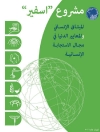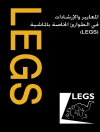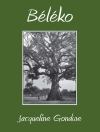This book presents the state of the art on cultural heritage and tourism globally. Divided into four themes of historical and economic contexts; building resilient societies; de-colonization, community, and placemaking; and empowerment and social capital, the book analyses the relevance of heritage and includes case studies in sustainable cultural heritage. It offers vital context and guidance for those working in heritage management and also presents emerging cultural heritage challenges and opportunities.
The volume presents a research agenda for understanding the role of heritage in identity, ecology, health and well-being and its application to heritage tourism. It discusses the need for partnerships between tourism and cultural heritage management and the need to establish better information sharing for establishing joint research initiatives. The central importance of sharing and incorporating Indigenous and/or local voices in order to expand tourists’ understandingof cultural heritage runs throughout the volume. The book highlights on-the-ground tools and guidance for cultural heritage resource managers and includes a discussion on emerging and convergent challenges such as the impacts of COVID-19 and climate disasters, featuring heritage and tourism from across the globe with emphasis on the dynamic situation in East and SE Asia. A concluding chapter summarizes themes and trends and future directions for this area of research with a focus on theoretical contributions. This book is of interest to heritage scholars and practitioners.
Зміст
List of Figures.- List of Tables.- Contributors.- Preface.- Part I: Introduction- Heritage and Tourism.- Chapter 1. Heritage Tourism’s History: Past as Prologue for the Anthropocene (Uzi Baram).- Chapter 2. Archaeology Based Tourism: Engaging the Public (George S. Smith).- Chapter 3. A Call for a Social Science of the Past and its Application to Heritage Tourism (Elizabeth S. Chilton).- Chapter 4. The Partnership between Tourism and Cultural Heritage Management (Hilary du Cros).- Chapter 5. Conflict and Stability: The Potential of Heritage Tourism in Promoting Peace and Reconciliation (Dallen Timothy).- Chapter 6. Cultural Heritage, Sustainable Development and the Future (Cornelius Holtorf).- Part II: Introduction: Case Studies in Sustainable Cultural Heritage Tourism.- Chapter 7. Heritage Tourism and Native American Communities in the American Southwest (Joelle G. Clark).- Chapter 8. Engaging Communities through the Knowledge Transmission of Heritage in Highland Pang Mapha, Norwest Thailand (Rasmi Shoocongdej).- Chapter 9. Heritage Tourism Management Plan for Luxor, Egypt (Fekri Hassan).- Chapter 10. Public Interpretations of Archaeological Sites in Thailand (Thanik Lertcharnrit).- Chapter 11. Indigenous Exhibit at the Museum: A Device of Tourism to Bring Awareness to the General Public (Atsushi Nobayshi).- Chapter 12. Tourism and Adverse Impacts at Angkor (Vanna Ly).- Chapter 13. Environmental Shift and Multiple memories of Ritual Landscape: Boat Ritual as Making Culture Heritage of the Nangshi Amis (Yi-Tze Lee).- Chapter 14. Exposing the Sacred – Ethno-tourism in Southeast Asia (Anna Karlstrom).- Part III: Introduction: On the Ground Tools and Guidance for Cultural Heritage Tourism.- Chapter 15. The Impact of COVID-19 on Culture, Heritage and Tourism in Australian Aboriginal Communities (Claire Smith).- Chapter 16. Heritage and Tourism Organizations in a Disrupted World (Ian Baxter).- Tourism, Museums, and Ethics: Preserving Cultural Heritage for the Future (Chen Shen).- Chapter 17. Climate Vulnerability and Building Adaptive Capacity for Cultural Heritage: Case Studies from US National Parks (Pei-Lin Yu).- Chapter 18. The Role of Crisis Management in Cultural Heritage Tourism (Lori Pennington-Gray).- Chapter 19. Heritage Tourism in Asia: A Double-Edged Sword and a Promise Unkept (William Chapman).- Part IV: Introduction: Emerging Cultural Heritage Tourism: Challenges and Opportunities.- Chapter 20. The Power of Storytelling: Changing National Narratives, Collective Memories, and Cultural Heritage as Observed through Walking Tours in Taipei (Ashley Deng-Yu Chen).- Chapter 21. Community Archaeology in Alexandria Virginia USA Sustainable Heritage Living & Tourism (Pamela J. Cressey).- Chapter 22. When Value-Sets Collide: Finding Commonality in Tourism, Economic Development and Cultural Heritage Management (William H. Jansen II).- Chapter 23. Cultural Heritage on University Campus: The Practice of Using Archaeological Sites for Development at SUSTech, China (Jigen Tang).- Chapter 24. Development of Local Museums in the Lands Bordering the Straits of Melaka (John Miksic).
Про автора
Dr. Pei-Lin Yu has worked as an anthropological archaeologist for more than 20 years for the Forest Service, Park Service, Bureau of Reclamation, and Corps of Engineers. She has consulted with experts from more than 25 tribal and indigenous communities and worked in scientific archaeology and as a repatriation specialist. Yu’s research interests include ethnoarchaeology, indigenous cultural heritage values and preservation, Neolithic and Paleolithic Island Southeast Asia, and climate change and resilience of past and contemporary societies.
Dr. Thanik Lertcharnrit has worked as an archaeologist for over three decades. He has engaged in numerous government and non-government projects on the preservation and public education of cultural heritage sites in Thailand. Thanik’s research interests include prehistoric Thailand and Southeast Asia, ceramic analysis, emergence of early complex societies, and cultural resource management.
Dr. George S. Smith holds undergraduate and graduate degrees in anthropology and has been awarded two honorary doctorate degrees for his work in cultural heritage management, archaeological resource protection, and archaeological curriculum development. He has taught cultural heritage management and helped establish the SAA’s public education and curriculum committees, and the heritage values interest group. He has published numerous books and articles on cultural heritage.












